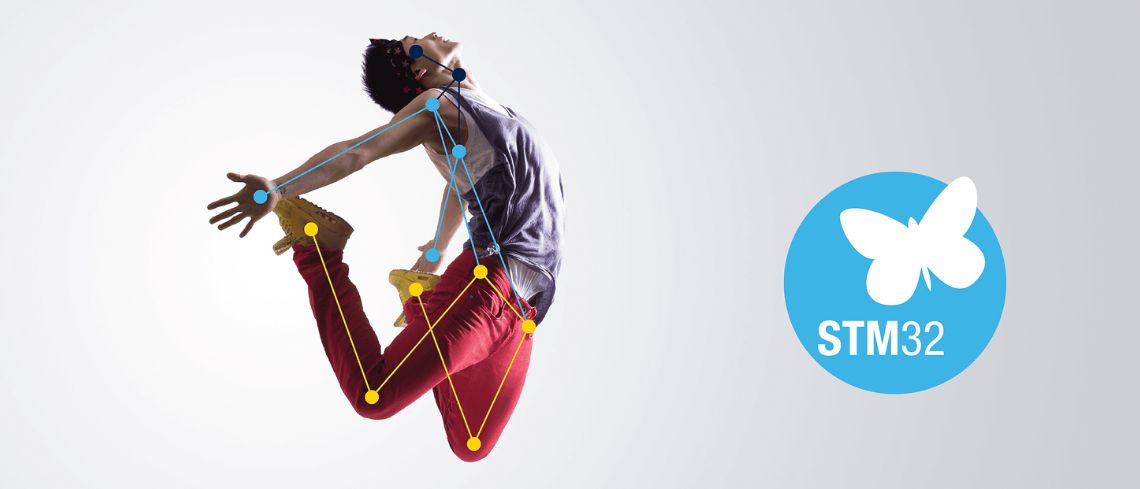ST is announcing major updates to the STM32 AI Model Zoo, making it the most extensive collection of AI models from an MCU manufacturer. Sorted by use cases, there are now more than 140 ready-made models for vision, audio, and sensing. And by popular demand, we are also adding native support for PyTorch models. This initiative builds on our existing support for TensorFlow and Keras, tailoring our solution to more workflows. Many of our models are already quantized and pruned for greater efficiency. We even offer STM32 Model Zoo services that include scripts and tools to facilitate the use of our models in our ecosystem or to help teams customize them to fit their needs.
Why an STM32 AI Model Zoo?
Recognizing the existing challenges
Avid readers of the ST Blog know that we first launched the ST AI Model Zoo in 2023 with the STM32Cube.AI Developer Cloud, which helped bring AI models from farm to MCU in no time. The initiative grew out of a desire to solve the challenges that embedded systems developers encountered when working on machine learning applications at the edge. For many in our community, this is a very recent development, so they don’t always know how to begin. Even those with years of experience can find optimization operations challenging or struggle to keep up with new AI models. Knowing which model to use is complex, but working within memory constraints and ensuring great performance is also a tall order.
Lowering the barrier to entry
As a result, we developed the STM32 AI Model Zoo, which addresses these issues by offering a broad catalog of models for various applications. For those who are less familiar with AI at the edge, the Model Zoo is a starting point that provides ready-made solutions for many AI tasks. By using our AI categories, developers can quickly identify the applications most closely related to their project and review the available options. It’s also why we provide demo examples with tutorials to run them on specific ST development boards. In a nutshell, it enables engineers to run a proof of concept in minutes and understand the specificities and performances of each model as they run it.
Lowering the time-to-market
Those wishing to customize and optimize the available models have access to dedicated services. Indeed, the ST solution includes scripts that help re-train existing models, quantize them, evaluate the accuracy, and benchmark inferences across a selection of STM32 boards hosted in the cloud, thereby significantly reducing the effort required to select the best hardware for an application. It’s even possible to seamlessly run a customized AI model on a board, using the deployment service and our Getting Started application packages, as these application examples can be automatically updated using the Model Zoo services. Hence, a company could bring its own data and use the STM32 AI Model Zoo to shorten its time-to-market.
What’s new in the STM32 AI Model Zoo?
Adapting to new realities
Today’s announcement builds on what ST has learned since 2023. That’s why we are now adding support for LiteRT and PyTorch. For a long time, many teams perceived TensorFlow as more production-ready and thus prioritized it. However, over time, things have changed significantly, and we are seeing that PyTorch is increasingly popular among our community members and our partners. Researchers also seem to notice an increase in PyTorch’s adoption in industrial settings1, 2. It’s why this new version of the STM32 AI Model Zoo includes native PyTorch support for numerous models, and this number will only increase over time as we adapt to this new reality.
Pushing performance limits

The updated STM32 AI Model Zoo now offers optimized models, providing more options for improving the performance of AI inference operations. Concretely, this means using 4-bit weights, compression, and pruning to reduce overall footprint and speed up inference time while still preserving accuracy. These optimizations have been performed using the ST optimization toolbox that will be made available to STM32 users in the future.
Adding new use cases
ST also continues to add new use cases. For instance, last August, our GitHub repository saw the addition of Style Transfer and Depth Estimation. The former learns from various artistic styles. In our use case, we trained it on the painting La Muse by Pablo Picasso and the COCO dataset to generate images influenced by the styles found in its training data. On an STM32N6570-DK, inference operations take less than 62 milliseconds. Depth Estimation gauges depth within an environment using a single camera, which is essential for obstacle avoidance in low-cost robot applications and mapping programs, among others. Users can expect more use cases (re-ID, face landmarks, and more) as we update the STM32 AI Model Zoo.
- Check out the STM32 Model Zoo
- Discover our getting started projects
- Register to watch the STM32 Summit Tech dives
- See Zakariya Ba Alawi. A Comparative Survey of PyTorch vs TensorFlow for Deep Learning: Usability, Performance, and Deployment Trade-offs. Department of Software Engineering. Alfaisal University, Riyadh, Saudi Arabia. https://arxiv.org/html/2508.04035v1. ↩︎
- See also the report by the Linux Foundation entitled Shaping the Future of Generative AI, which shows that a majority of organizations are now using PyTorch. ↩︎




